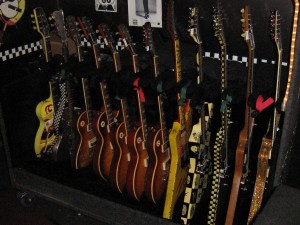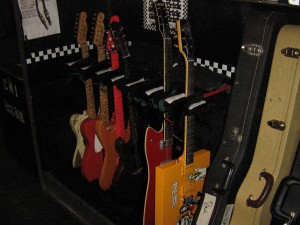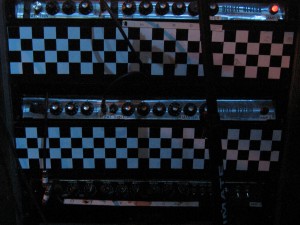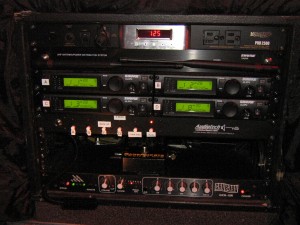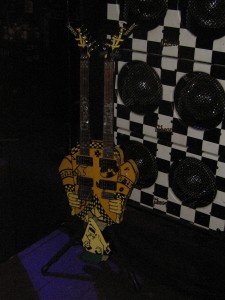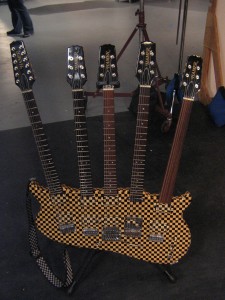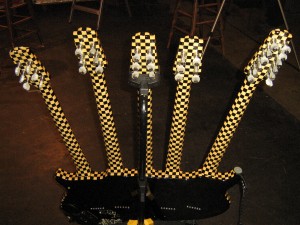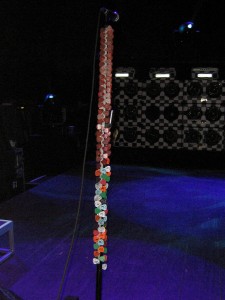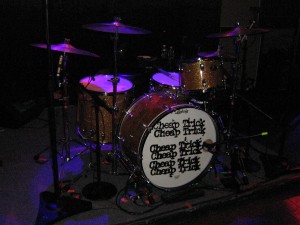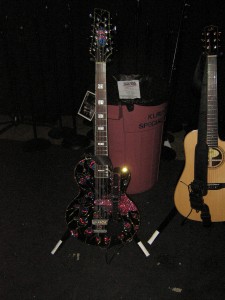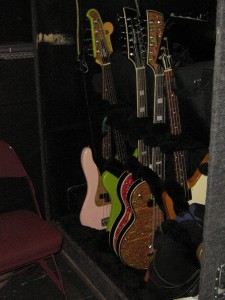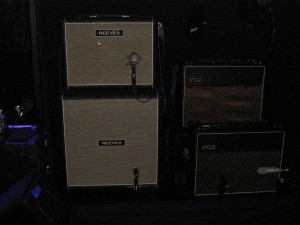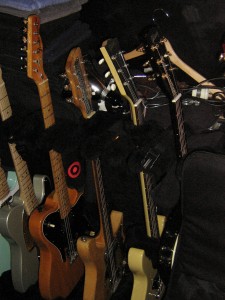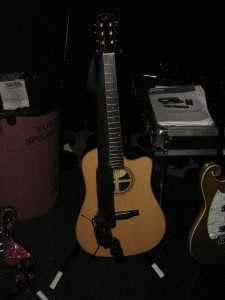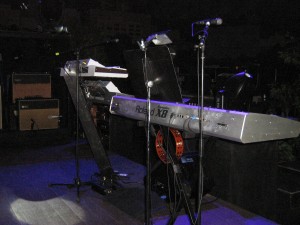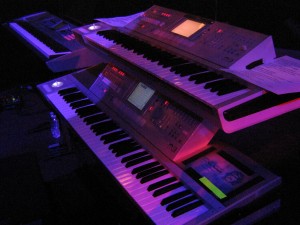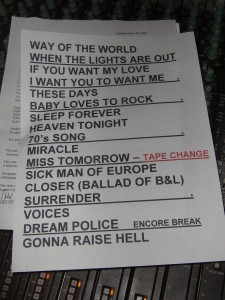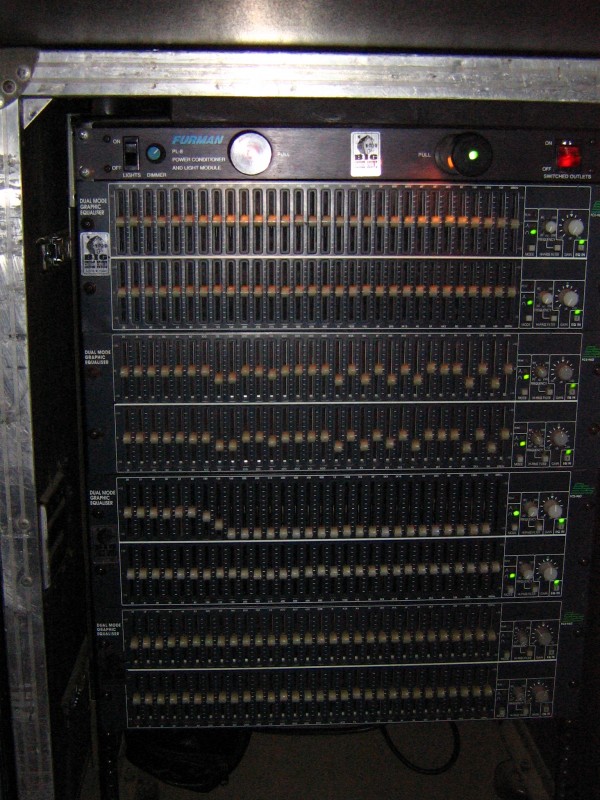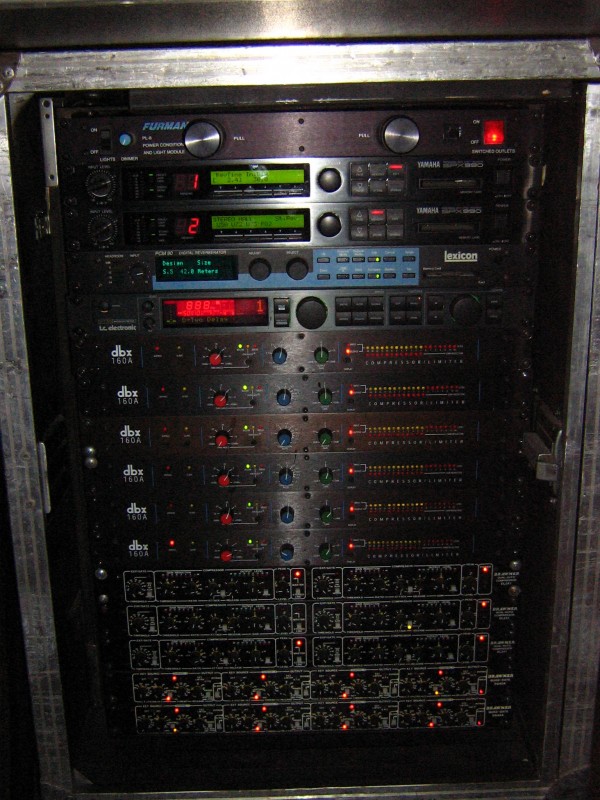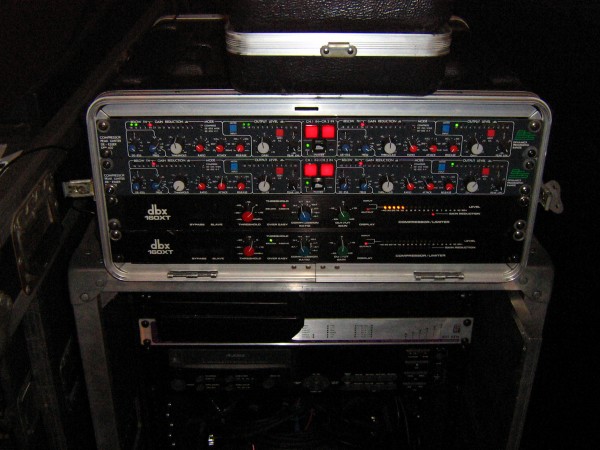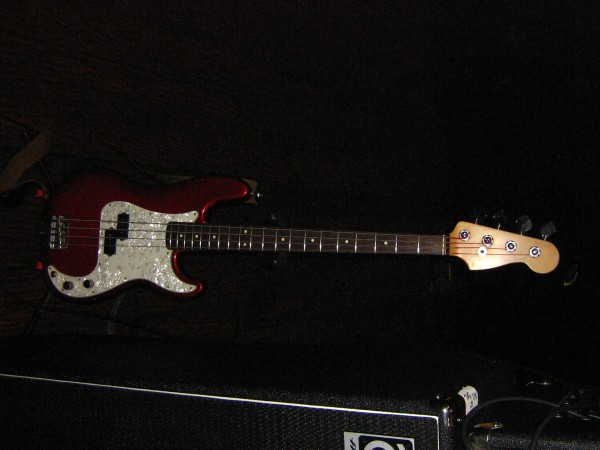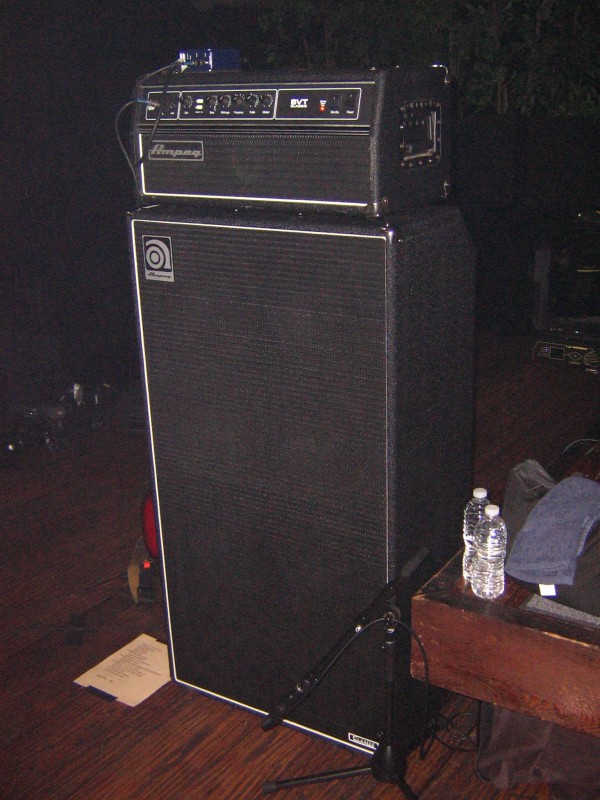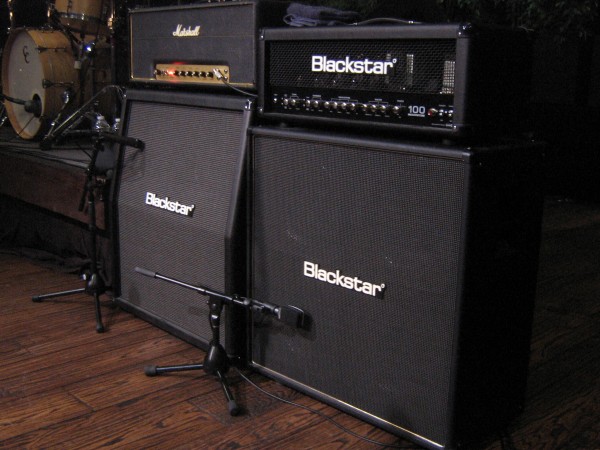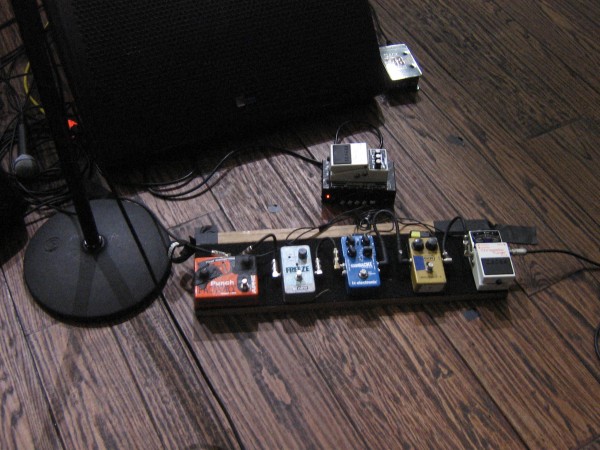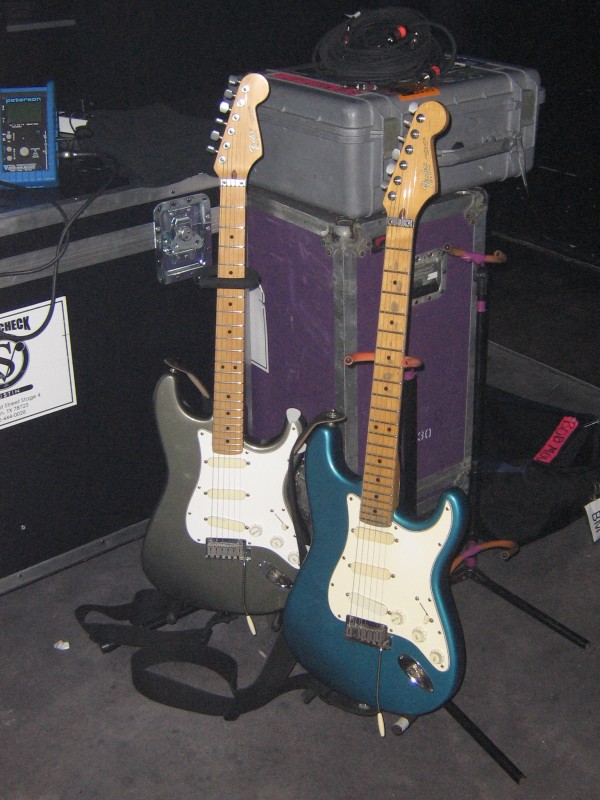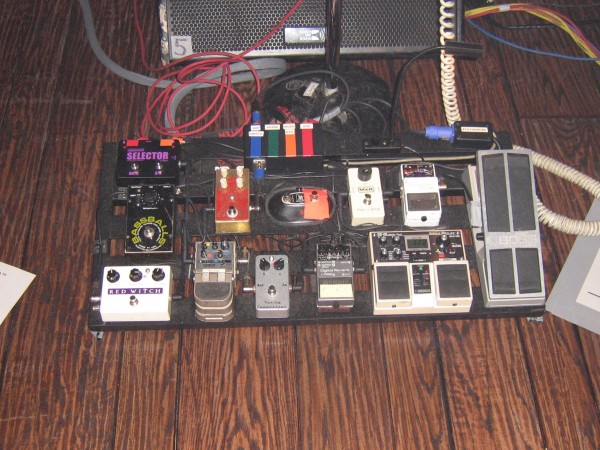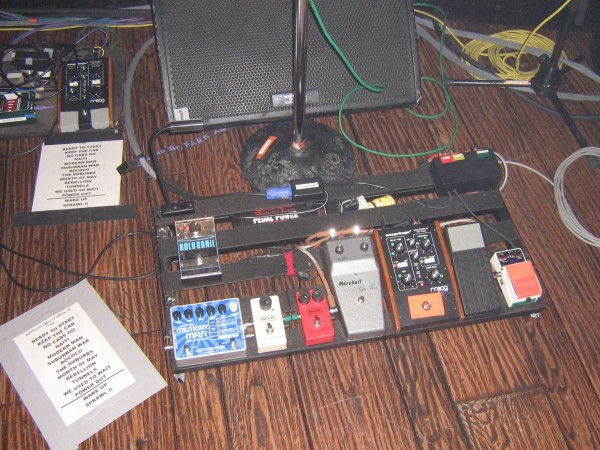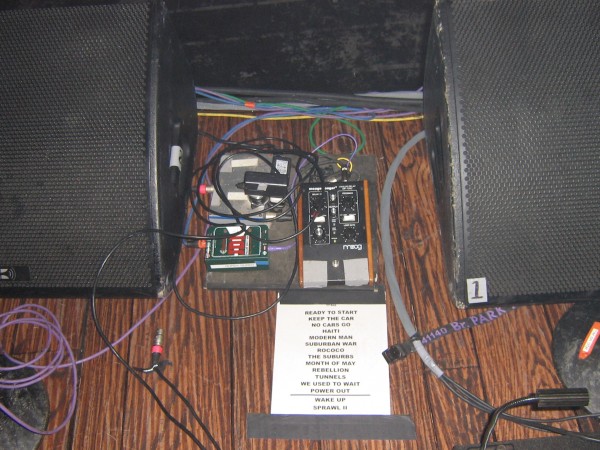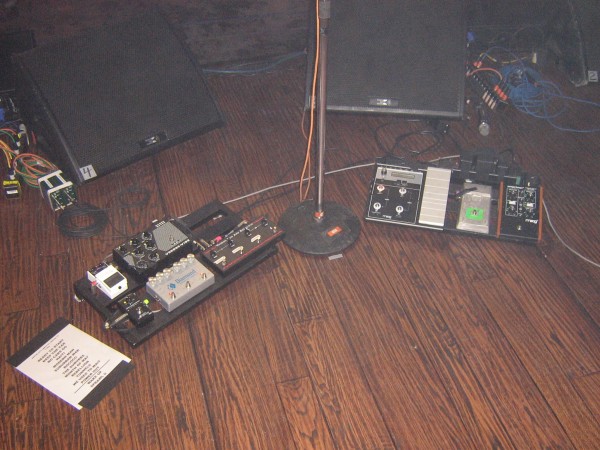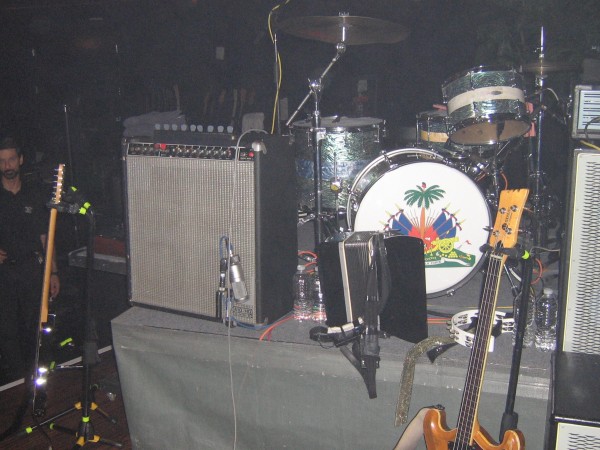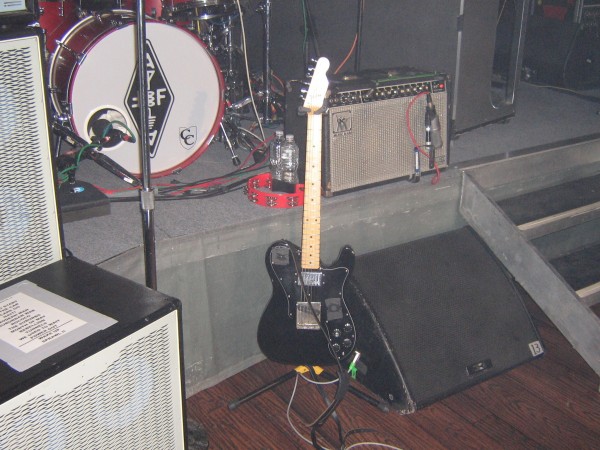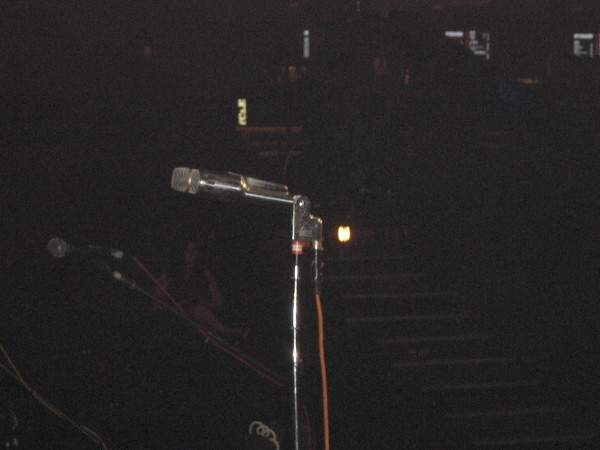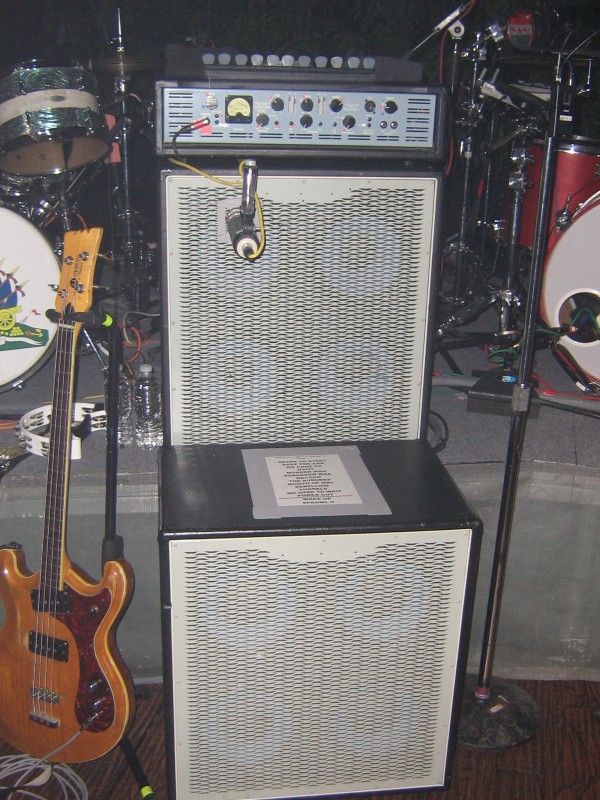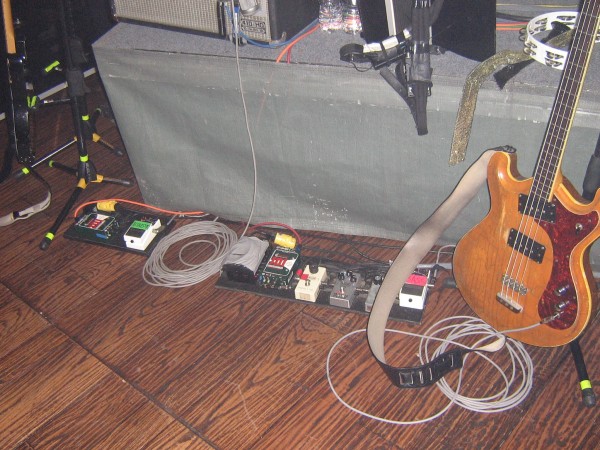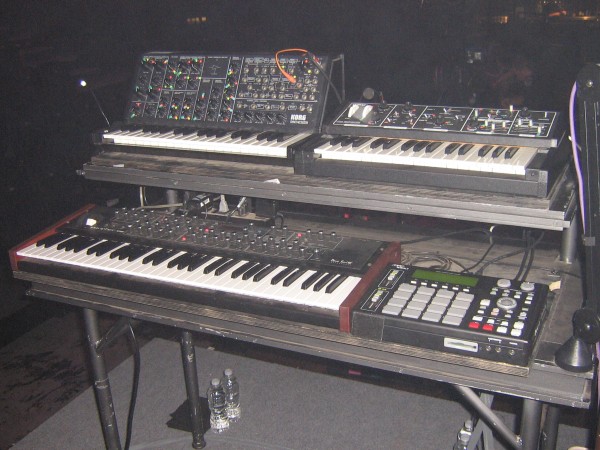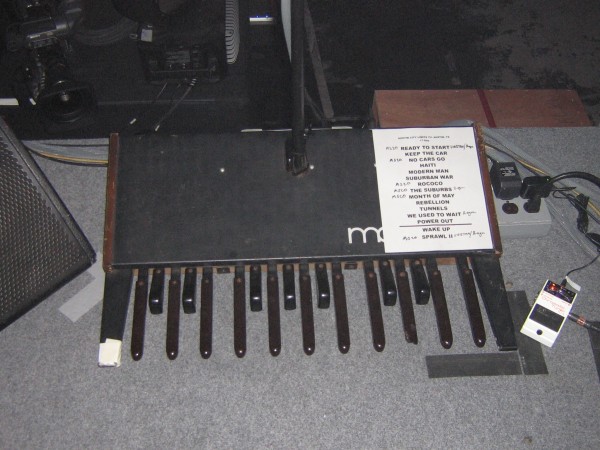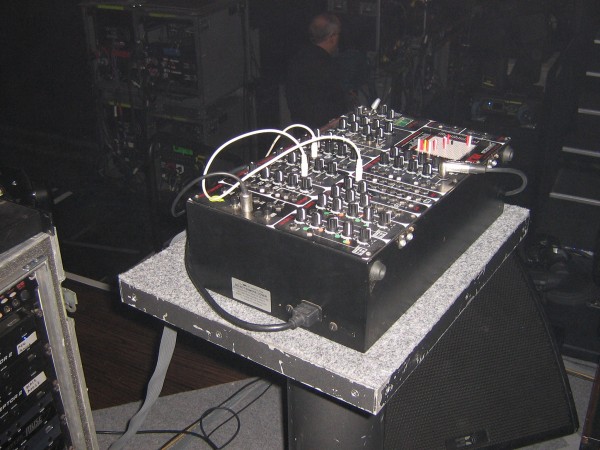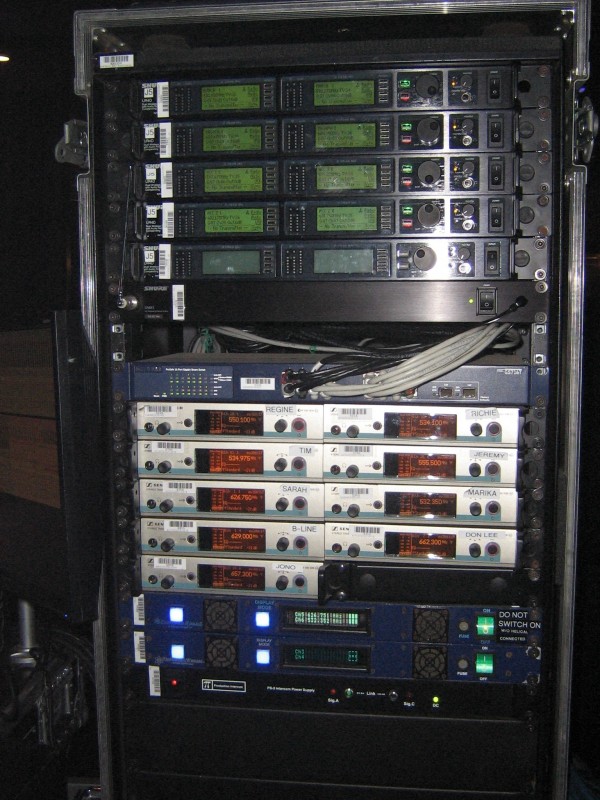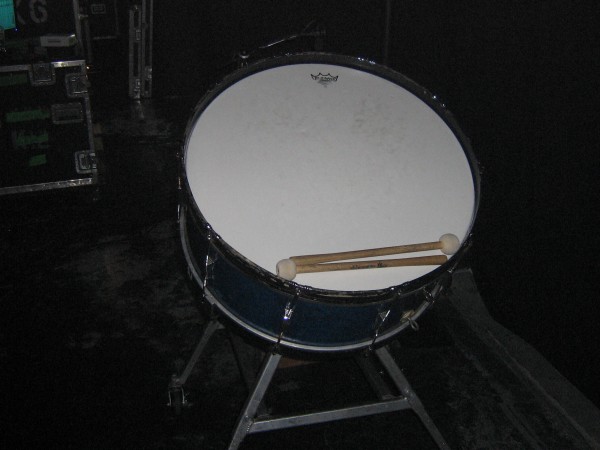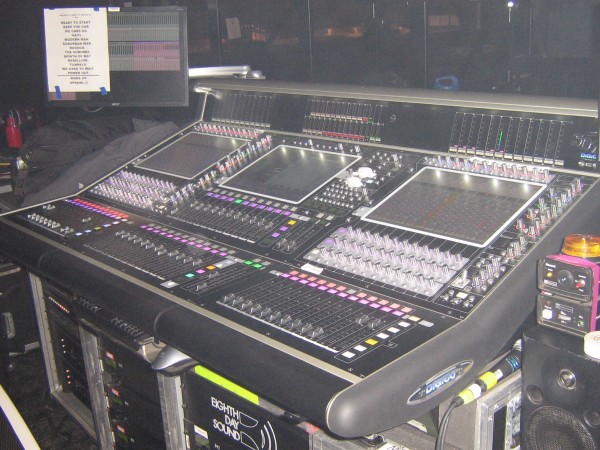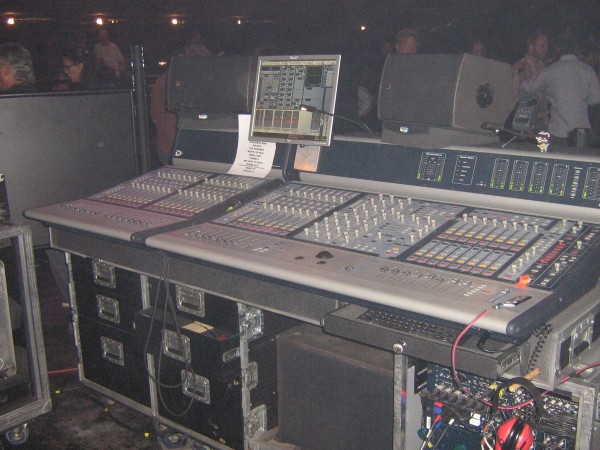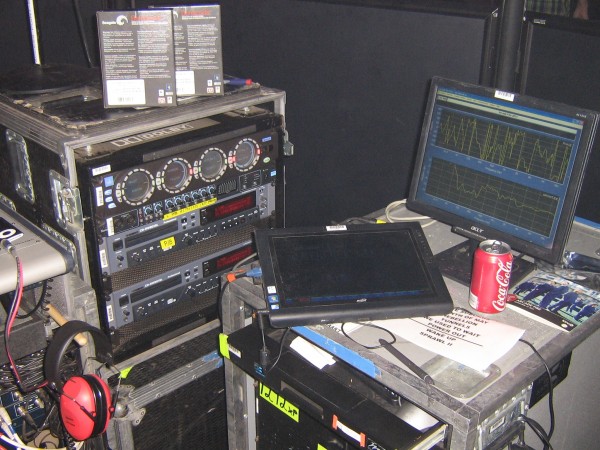The Gear Blog is a behind-the-scenes look at the instruments and equipment that graces the Austin City Limits’ stage. Our Audio Engineer Kevin Cochran goes in-depth to give our audiophiles their fix.
I hate deadlines. So much so that it’s been 2+ years since I’ve done my last gear blog, so let’s just jump in. We filmed Cheap Trick during the 2010 South By Southwest when we were both celebrating the beginning of our 36th year in business.
Rick Nielsen’s guitar tech is a busy, busy man. Rick changed guitars on every song. There was no point in the set that he played the same guitar twice. Rick is well known for his association with Hamer guitars, but his touring rig also has vintage Les Pauls.
Above, we have two Bo Diddley inspired guitars. One is a Hamer having the box like shape Bo was known and a red Gretsch Billy-Bo. On the far left is 50’s Fender Telecaster once owned by Jeff Beck himself.
Rick’s onstage amp setup is just as ostentatious as his guitars. Seen here are three Fuchs Train 45 heads. At the time, I noted that there is only one set of speakers in the center of the cabinets. Every other speaker cabinet actually contained head lights.
Off stage is a pair Mr. Nielsen’s original 70’s Deluxe Reverbs. As memory serves they were modded by Paul Rivera, by taking the heads out of the combo chassis and putting them into a roll-around rack. Above is Nielsen’s wireless system and only effect: a Dunlop Crybaby.
Hamer custom double neck. One has a Kahler vibrato system and one has a hard tail. Note the custom inlay.
If any guitar is associated with Rick, other than the Explorer style guitar, it’s this Hamer 5 neck. In addition to 12-string and fretless necks, there is also a Telecaster-style pickup configuration and two double humbucker configurations, one with a locking tremolo. Mr. Nielsen was kind enough to let anyone on the ACL crew pick it up, play it, or get their picture taken with it. It’s not as heavy as it looks, and except for one neck, it’s not in tune. Since Rick plays only one song with it, why bother?
Note the banjo style tuning pegs.
As you might have noticed, Rick favors a checkerboard motif on much of his guitars and equipment. Even his iPhone case had a checkerboard design.
We kept finding picks for months after the Cheap Trick taping. Mr. Nielsen is fond of flinging them into the audience and his stand will almost be completely bare by the end of the set. Surprisingly, for a man with so many picks, he likes to play with his fingers a lot.
Daxx Nielsen played drums for CT’s taping. This Ludwig drum kit has the same finish as one of Rick’s Explorers and a couple of Tom Petersson’s basses.
Tom Petersson’s road rig is just as exotic as Nielsen’s. Here is his signature Waterstone 12-string bass. It’s tuned like a regular bass, but with additional strings one and two octaves higher above the traditional bass note.
In addition to a couple of 12-string backups, Tom has a traditional 4-string Fender Precision bass in beautiful pink and a Gibson Explorer bass, to compliment Nielsen’s own Explorer fetish. And yes, that strange finish pops up once again on not one but two of Tom’s own basses.
Petersson splits his bass signal into a Reeves cabinet for the low end and a Vox amp for the higher register strings.
Robin Zander brought a smattering of Tele’s, a Rickenbacker, and a couple of Gibson electrics with him. My favorite was a 12-string telecaster.
The only acoustic of the entire bunch was this Bedell. To the right, clipped out of frame is a Mark Sandman-inspired Waterstone electric. I’m a sucker for gold.
Cheap Trick brought along two guest keyboardists to help along, Magic Cristian and the great Roger Manning Jr.
Finally, the set list for that night. Please note we have not used actual tape for years – it’s just that we did for 30 of our 38 seasons and calling it that is old habit. It does get quite embarrassing when we have to stop for a “tape change” and the band members or tour managers and asks, “You guys still use tape?”

